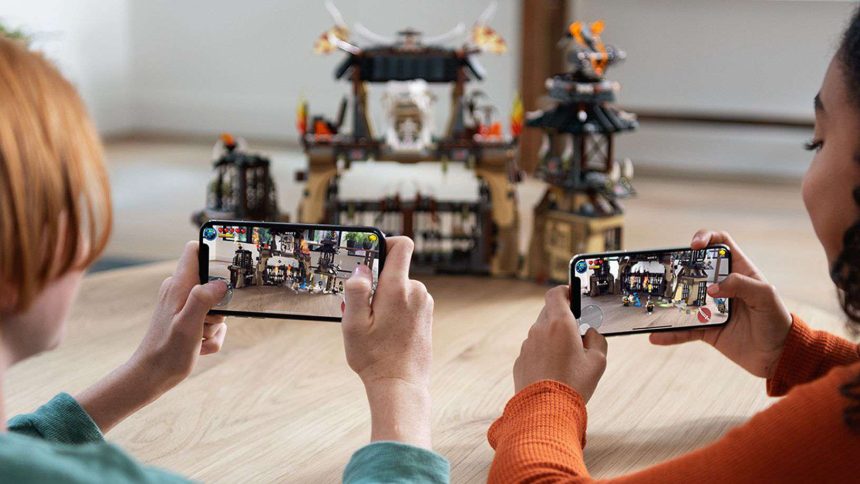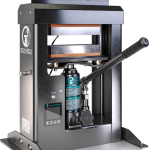The first time people ‘actually’ experienced Augmented Reality (AR) was back in 1968 even though the technology existed since 1957. A computer scientist named Ivan Sutherland created an AR head-mounted display system to run augmented reality apps which laid the foundation of what we see today.
Back then, nobody ever thought augmented reality would grow out to become 14.7 billion USD market. The industry has become huge. From sports to marketing, advertising, and space travel – augmented reality has had a staunch mark ever since it became mainstream in the modern era.
AR is thereby an interactive experience offering a myriad of possibilities including text, audio, and graphics alongside other virtual enhancements. All these elements are interlinked with real-world objects to offer an immersive consumer experience. This technology basically lays computer-generated images over a consumer’s view of the real world.
Keeping in mind the market of consumer technology and how it has gained momentum in the past few years, product design in the AR world has a great future. Augmented reality apps such as Pokémon Go, SketchAR, and more are not only providing great user experience, but opening door to newer, more dynamic ventures.
AR is the new way users consume content – digitally and visually. These immersive technologies bridge the gap between digital and physical worlds. Here are some of the top facts you should know about Augmented Reality.
Augmented Reality Has a Long History
That’s right!
Imagine, the concept of AR and immersive worlds in 1957. A machine was invented, called Sensorama at that time, which gave a 3D experience with stereo sound.
The early traces of AR applications in the mainstream market were in 1968 when Ivan Sutherland created a head-mounted display. The idea was to ‘augment’ computer data with real world perspectives.
The technology was named ‘Augmented Reality’ by Tom Caudell who was a renowned Boeing researcher. He used the technology to help aircraft electricians understand the basics of the work.
Industry Projected to Grow Even Further
What we are seeing right now in the AR world is just the beginning. The technology is shaping way how industries conduct their business operations. But there is a lot more to come. With majority industries and businesses already implementing augmented reality apps to stay ahead of the curve, AR market is expected to grow significantly in the times to come.
According to Poplar, the industry is expected to have over 3.5 billion AR users by the end of next year across the globe. The consumer base will eventually increase three times than what it is currently when 2022 ends. The figure currently stands at 0.81 people using AR in their daily lives.
If we talk about market perspective, analysts believe the AR industry will be worth over $18 billion by 2023. Seeing the trends since 2018 when the market was only worth $1.8 billion, the value could double or triple in the near future.
Augmented Reality Attracts Younger Consumer Base
The newer generation is more inclined towards experimenting and adapting significant technological advancements we have seen in the past decade or so. Similarly, GWI reports that the most common age group that uses augmented reality apps to its full potential is between 16 and 34 years old.
The company which conducted the study involved 4,000 participants who were active internet users. Nearly 35% of the people were aged between this age group who consume content using both AR and VR experiences.
Augmented Reality & Industrial Cases
Even though Niantic Inc. revived the augmented reality concept with its Pokémon Go game launched back in 2016, the industry has come leaps and bounds to shape the future of different industries.
More companies are interested to learn about and implement this technology to offer something new and extra to its intended audience. Augmented Reality has become ‘the next big thing’ in the numerous industries such as marketing, designing, advertising, real estate, and more.
The technology comes with its fair share of casual and commercial applications to benefit all kinds of consumers.
Augmented Reality Improves Conversion Rate
You may think different, but it really is the ‘truth’. We live in an era where consumers prefer convenience over everything. And, with the recent pandemic hit which enabled everything to be managed digitally – the idea of shopping and working from home has become more common.
71% consumers are said to make a purchase and shop online more often if a retailer offers AR experience. Imagine how cool it is to see what a dress would look like on you or a certain furniture in your room from the comfort of your home.
Businesses are emerging their interests in AR to increase buyer confidence. Gone are the days when consumers were ‘wow-ed’ with traditional images on a website. They look for something extra which augmented reality apps can cover.
Augmented Reality is Not Expensive
From a bird’s eye view, AR looks expensive. But in reality (no pun intended), it is not!
In recent times, augmented reality has become an inexpensive solution to implement into product design and development.
Final Remarks
Augmented Reality has seen (and still seeing) an unbelievable boom. Ever since the technology was revived back in 2016, the trend is going only upwards. The current AR market value stands at $3.5 billion which is project to cross $198 billion by the end of 2025.














